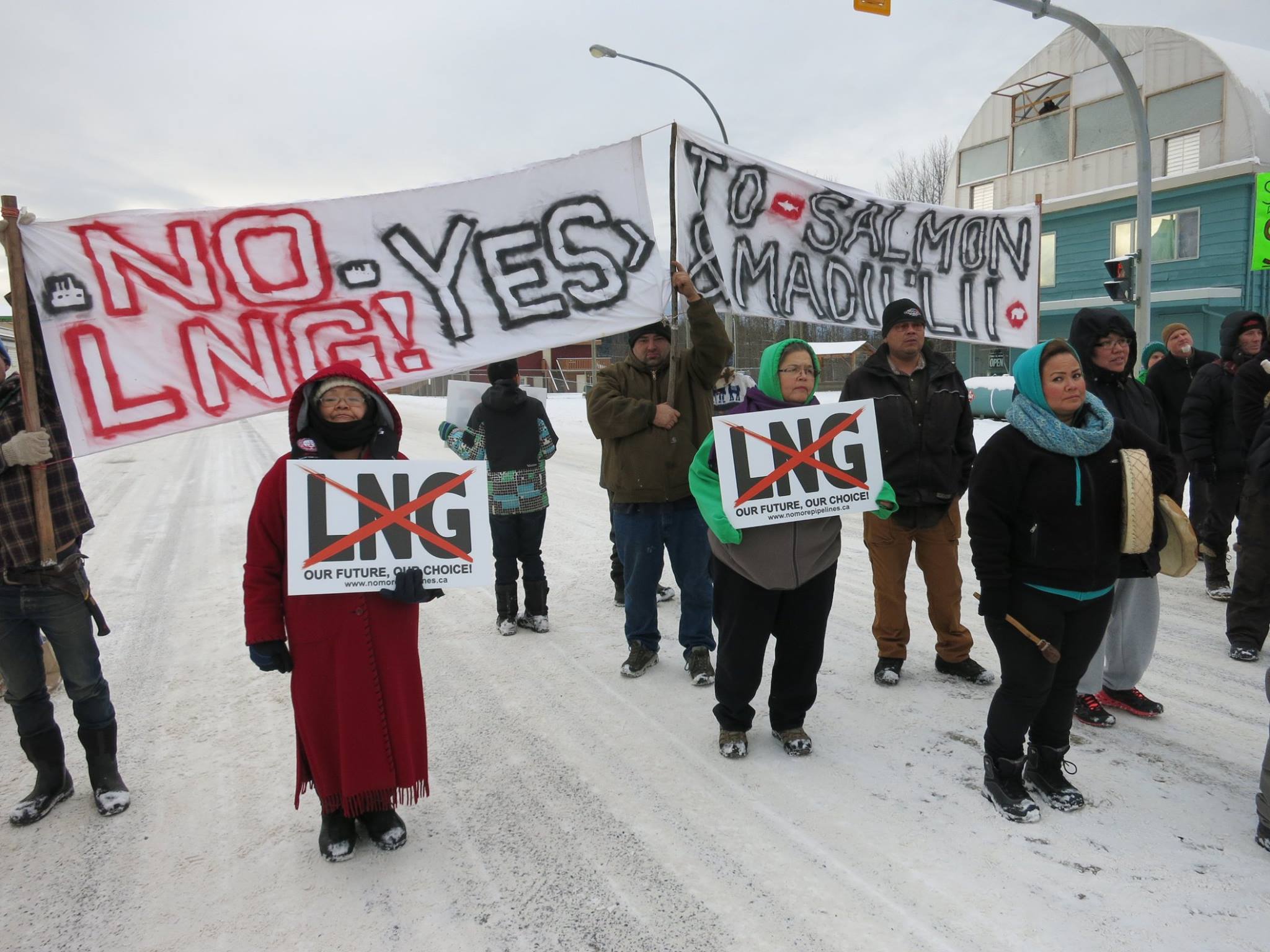On November 25, the British Columbia government issued provincial environmental assessment certificates to two proposed pipelines — TransCanada’s Prince Rupert Gas Transmission pipeline and Spectra Energy Corp.’s Westcoast Connector Gas Transmission pipeline — and Petronas’ Pacific Northwest Liquefied Natural Gas (LNG) export terminal.
The 900-kilometre Prince Rupert Gas Transmission pipeline would transport fracked gas from northeastern British Columbia (near Hudson’s Hope) to the proposed Pacific Northwest LNG terminal on Lelu Island near Prince Rupert, which is situated about 700 kilometres northwest of Vancouver. The 850-kilometre Westcoast Connector pipeline would send fracked gas from northeastern B.C. (near Fort St. John) to BG Group’s proposed Prince Rupert LNG terminal on Ridley Island, which is also located near Prince Rupert.
Both of these pipelines would be built on Gitxsan territory, which is about 35,016 square kilometres of land located in the Skeena Watershed and includes the communities of Smithers, Terrace and Hazelton. Hazelton is located about 700 kilometres directly north of Vancouver. About 7 kilometres east of Hazelton is New Hazelton and Highway 16, the main highway that joins these communities.

A media release issued by the Luutkudziiwus/ Madii Lii camp states, “Gitxsan hereditary chiefs Spookw and Luutkudziiwus closed HWY 16 at New Hazelton on Dec. 6, 2014 in protest over the recent BCEAO [British Columbia Environmental Assessment Office] approvals of two natural gas pipelines proposed for Gitxsan territory, and one LNG terminal proposed for the Skeena Estuary. The chiefs say these projects threaten to collapse the Skeena salmon run that all upstream nations rely on.”
That media release adds, “About 65 people collected at HWY 16 on Saturday to support the closure. Attendees cited a number of issues that render the proposed LNG projects unacceptable including: low provincial LNG tax revenue, job loss to temporary foreign workers, potential of toxic air emissions on the north coast, potential of conversion of the pipelines to carry oil, and high risk to juvenile salmon at the Petronas LNG site on Lelu island.” Both Spookw hereditary chief Guuhadakwa (Norm Stephens) and hereditary chief Luutkudziiwus (Charlie Wright) were present at the protest and expressed their opposition to the pipelines and the LNG terminal. They also stated that the Gitxsan Treaty Society does not speak for them.
Madii Lii is the territory of Wilps (House of) Luutkudziiwus. This past summer, Hereditary Chiefs Luutkudziiwus, Xsim Wits’iin and Noola declared access to the Madii Lii Territory permanently closed to LNG pipeline development. A basecamp has now been built at the entrance to Madii Lii. A video about the construction of this camp can be seen here.
The Council of Canadians is opposed to the building of Liquefied Natural Gas terminals and pipelines in British Columbia. We believe that a ban on the development of LNG terminals and pipelines is necessary in order to respect Indigenous rights, limit greenhouse gas emissions, defend the province’s freshwater sources, protect wild salmon, and protect communities and the coastline. We stand with First Nations and non-First Nation communities across the province that are opposed to the LNG agenda.




